Minnesota’s pipeline transportation industry helps fuel jobs, tax revenue and GDP
By Lennie Kaplan and Mark Milke
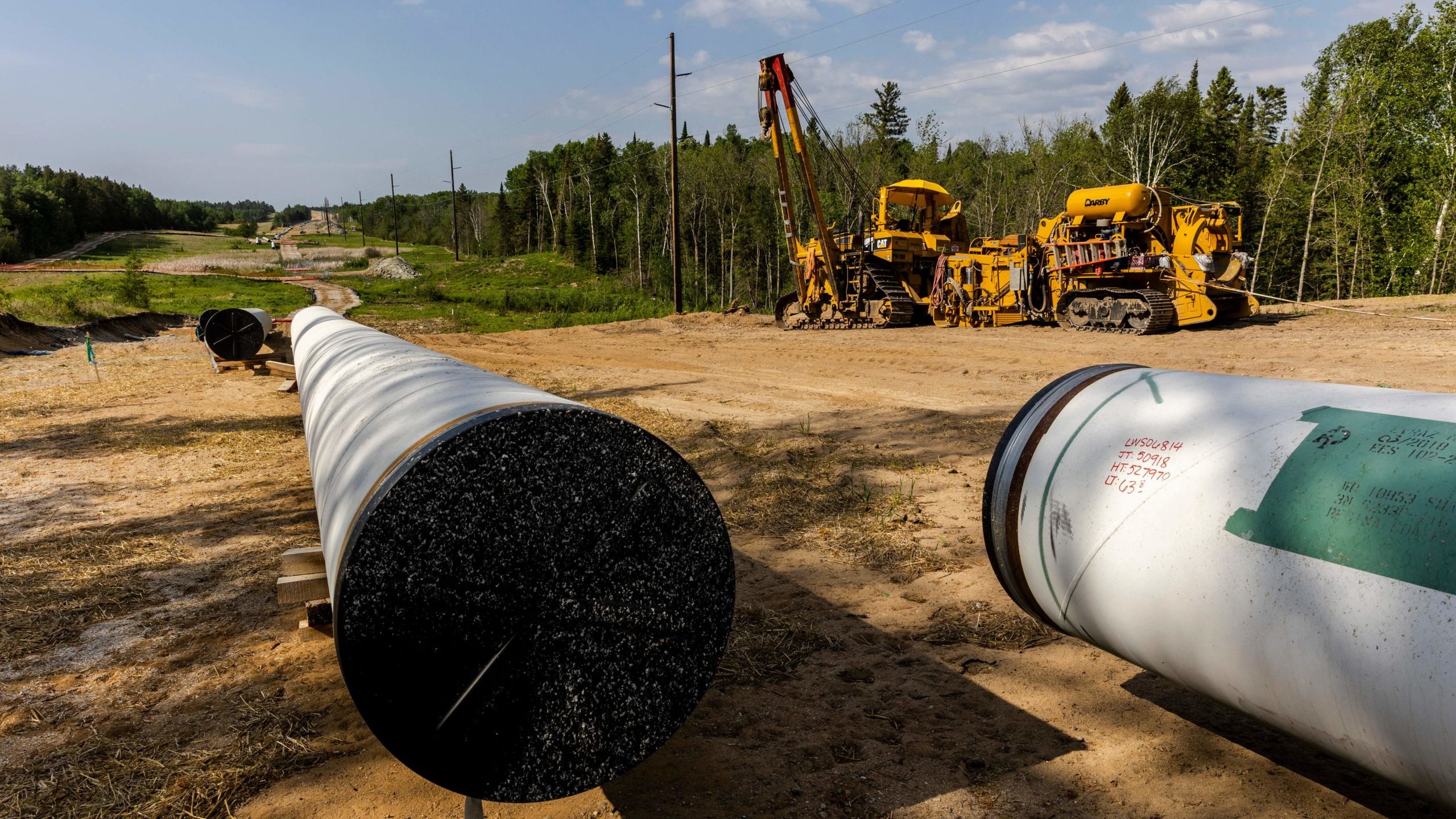
Download the PDF here
Download the charts here
Overview
A strong American oil and gas industry is a critical element of economic prosperity for the North American energy security network between Canada, the United States and Mexico. This includes pipeline infrastructure such as the Line 3 Replacement Project in Minnesota. In this CEC Fact Sheet, we analyze the direct and indirect economic impacts of the pipeline transportation industry in Minnesota, using the IMPLAN database model.¹
1. See ‘About the IMPLAN model’ in Notes at the end of this Fact Sheet.
Canada and two U.S. states: Michigan and Minnesota
There are also state facts worth noting in the context of attempts to shut down selected Canada-U.S. pipelines:
- Despite the attempts by Michigan governor Gretchen Whitmer to shut down Canadian-origin Line 5 in Michigan, in 2019, the total value of energy products exported from Canada to Michigan was over $4.2 billion, while the total value of energy products imported into Canada from Michigan was nearly $1.6 billion.
- As for Minnesota, in 2019 the total value of energy products imported from Canada was over $8.1 billion, while the total value of energy products exported to Canada was over $134 million.
Details on Minnesota’s Line 3
Work is currently underway to complete the final leg of the Line 3 Replacement Project in the U.S., consisting of constructing the remaining 337 miles of pipeline in Minnesota. The adjoining pipeline segments in North Dakota, Wisconsin and Canada are already complete. The construction of Line 3 Replacement is bringing both employment and safer, more reliable energy to communities in Minnesota. The state’s regulatory process took six years, including two reviews of a 13,000-plus page environmental impact statement, 70 public comment meetings, four separate legal reviews and 320 route modifications in response to stakeholder input.
In March 2021, the Minnesota Court of Appeals heard arguments over the Line 3 Replacement Project in northern Minnesota. The Minnesota Department of Commerce, along with the Red Lake Band of Chippewa, the White Earth Band of Ojibwe and several Indigenous and environmental groups argued before the three-judge panel that Enbridge failed to show long-term need for the Line 3 project.
In June 2021, the Minnesota Court of Appeals affirmed that Minnesota’s independent Public Utilities Commission correctly granted the certificate of need and route permit. In light of that decision, we review and highlight the economic benefits of the pipeline transportation industry in Minnesota.
Specific benefits of the Line 3 Replacement Project
According to Enbridge, the benefits of the Line 3 Replacement Project during construction are as follows:
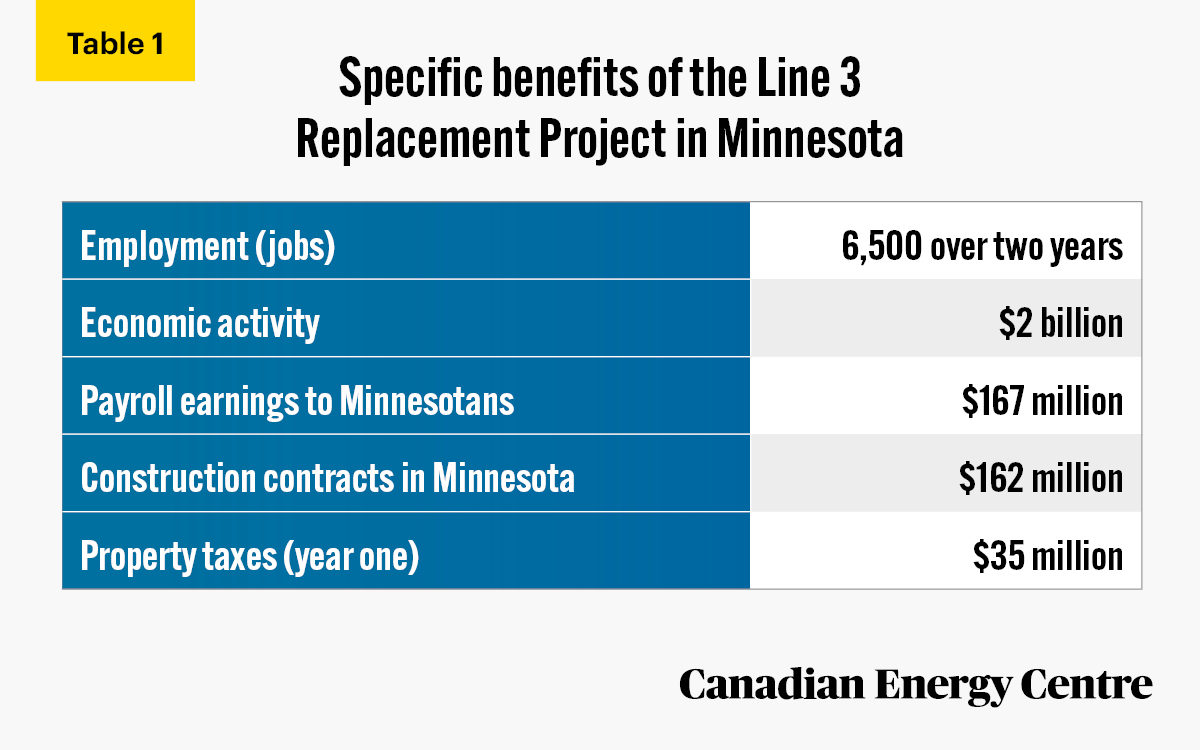
(Enbridge, undated).
Analysis of the pipeline industry in Minnesota
Tables 2, 3 and 4 summarize the direct and indirect impact on employment, labour income, employee compensation, output, value-added/GDP, and tax receipts from the operations of the Minnesota pipeline transportation industry in 2019.
The direct and indirect economic impacts of the pipeline transportation industry in Minnesota in 2019 are as follows (see Table 2). Direct impacts are measured as the jobs, labor income, employee compensation, value added/GDP and output within the Minnesota pipeline transportation industry; indirect impacts are measured as the jobs, labor income, employee compensation, value added/GDP and output occurring throughout the supply chain of the Minnesota pipeline transportation industry. Note that these are annual effects.
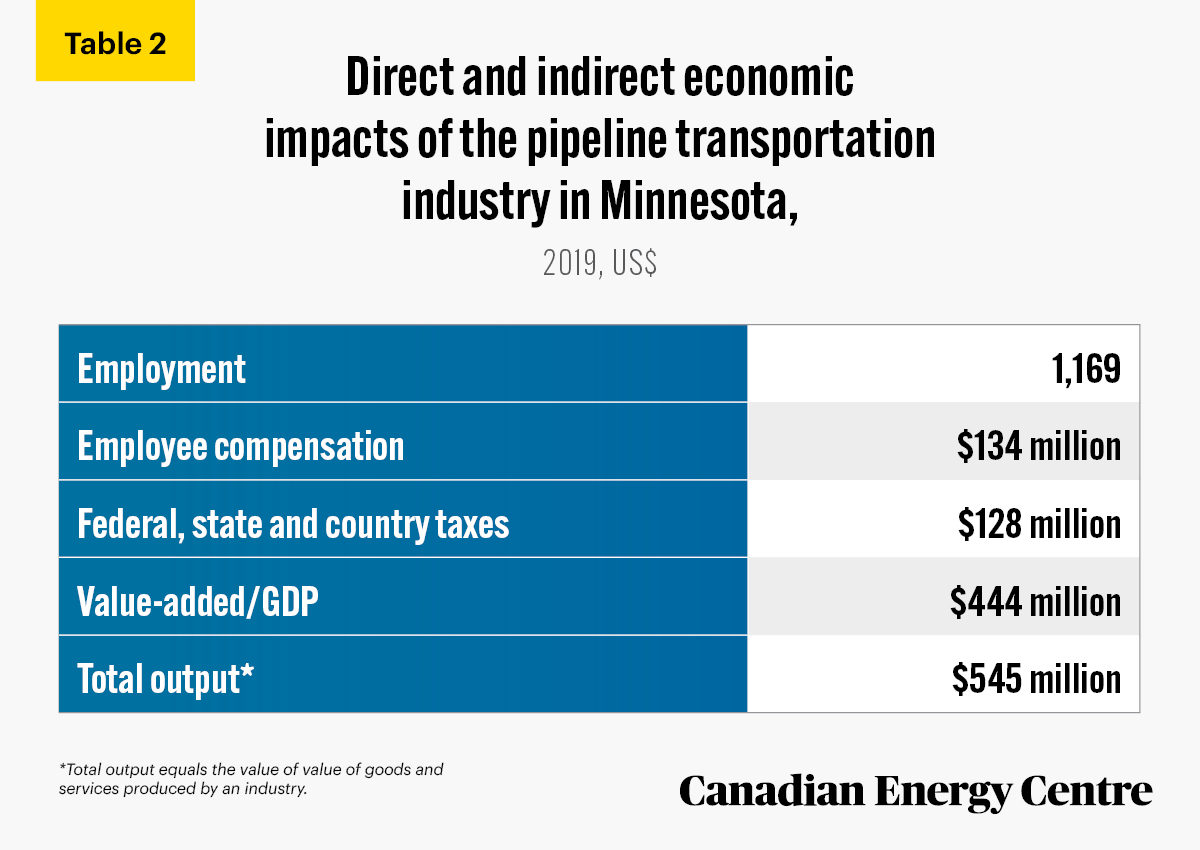
Source: IMPLAN 2021
Economic Impacts of the Minnesota Pipeline Transportation Industry, 2019
The economic impacts of the pipeline transportation industry in Minnesota can be further broken down by direct and indirect impacts (see Table 3). Also, the tax receipts from Minnesota’s pipeline sector can be broken down by federal, state, county and sub-county (see Table 4). Note that in both charts, most impacts are direct.²
2. To arrive at conservative estimates of employment, value-added/GDP, tax revenues and other impacts, we do not calculate induced economic impacts, only direct and indirect impacts.
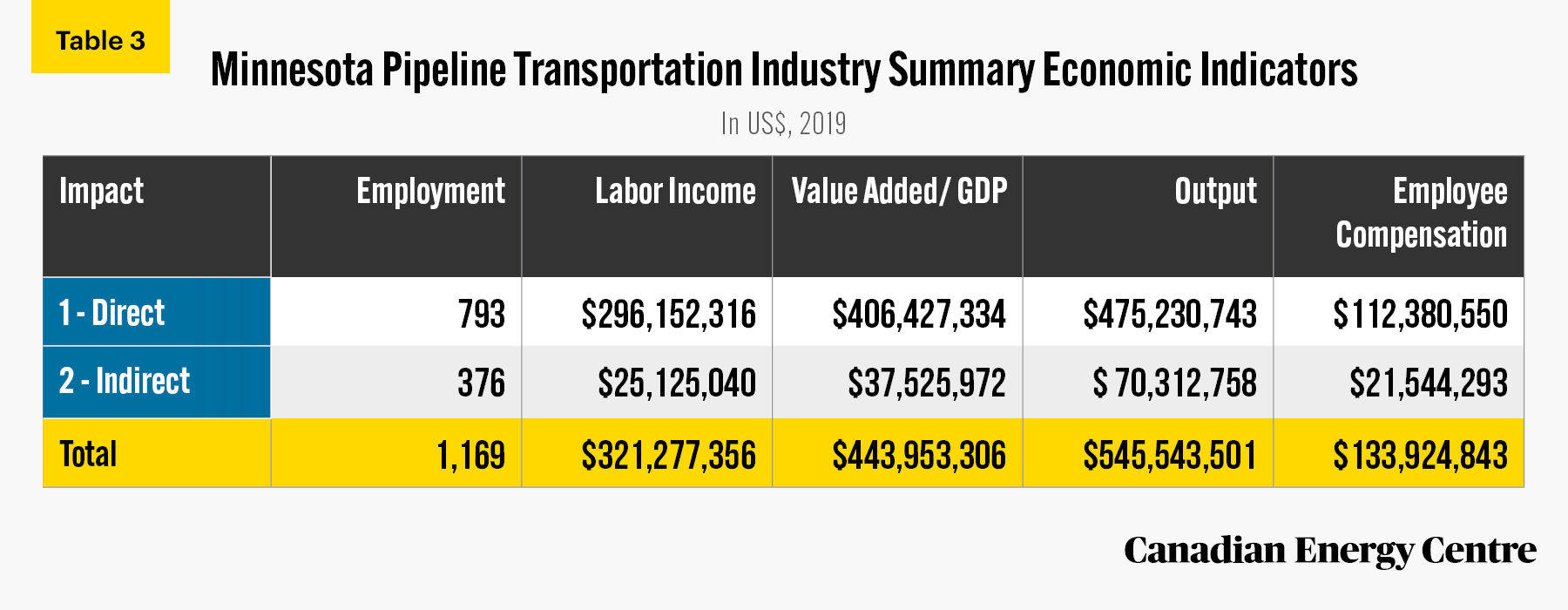
Source: IMPLAN 2021
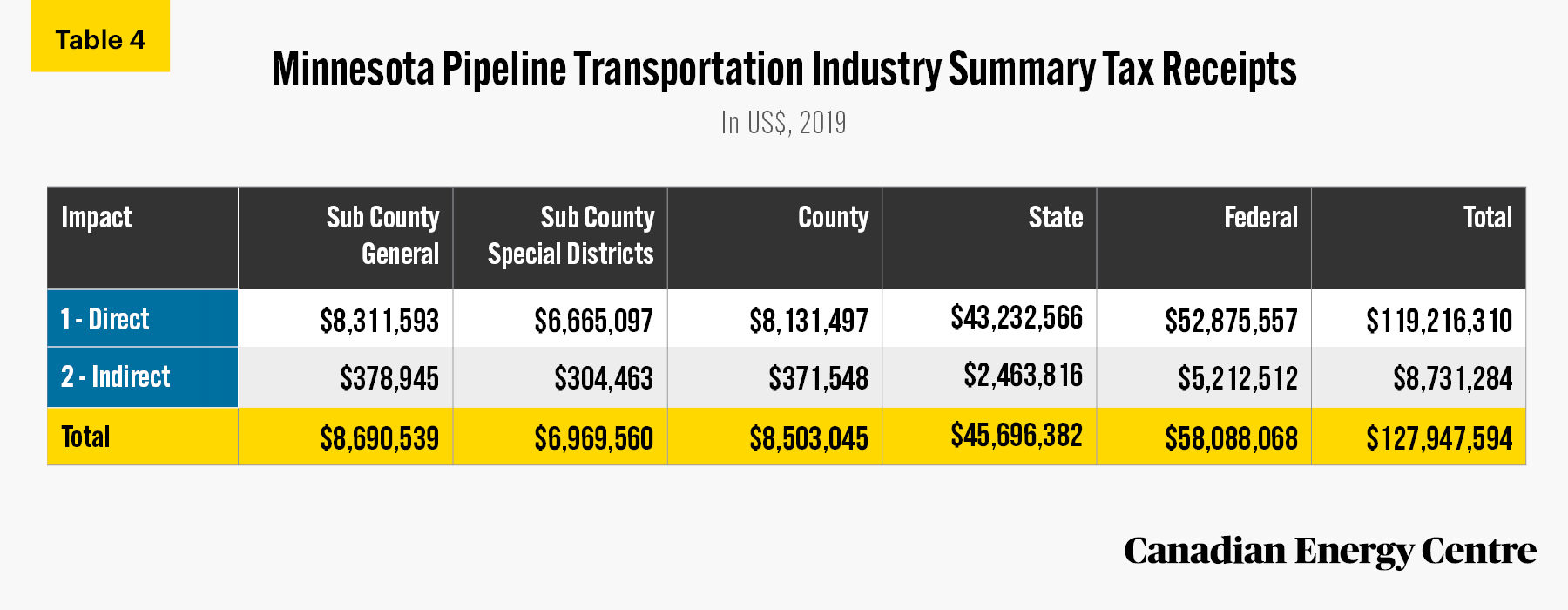
Source: IMPLAN 2021
Conclusion
New pipeline infrastructure, such as the Line 3 Replacement Project in Minnesota, will serve increased demand for crude oil, natural gas, and refined petroleum products and be critical to continuing a strong U.S. oil and gas industry and enhancing North American energy security between the U.S., Canada and Mexico.
In fact, the pipeline transportation industry plays a significant role in the Minnesota economy, employing 1,169 people, providing nearly $134 million in employee compensation, contributing nearly $444 million to valueadded/GDP and generating nearly $128 million in taxes for federal, state and county governments.
Notes
This CEC Fact Sheet was compiled by Lennie Kaplan and Mark Milke at the Canadian Energy Centre (www.canadianenergycentre.ca). Percentages in this report are calculated from the original data, which can run to multiple decimal points. They are not calculated using the rounded figures that may appear in charts and in the text, which are more reader-friendly. Thus, calculations made from the rounded figures (and not the more precise source data) will differ from the more statistically precise percentages we arrive at using source data. The authors and the Canadian Energy Centre would like to thank and acknowledge the assistance of Philip Cross and an anonymous reviewer in reviewing the data and research for this Fact Sheet. Image credits: Nicole Geri from Unsplash.com
About the IMPLAN model
IMPLAN combines a set of extensive databases, economic factors, multipliers, and demographic statistics with a highly refined, customizable modeling system. IMPLAN allows detailed insights into an industry’s contribution to the U.S. and its states and counties. The pipeline transportation industry includes establishments that use transmission pipelines to transport products, such as crude oil, natural gas, and refined petroleum products. It also includes the storage of natural gas.
References (As of June 7, 2021)
Enbridge, updated, Line 3 Replacement. <https://bit.ly/2SRvu0x>; IMPLAN. (2021). Pipeline Transportation Industry: Regions and Results. <https://bit.ly/3oPIdN4>; In the Matter of the Application of Enbridge Energy, Limited Partnership, for a Certificate of Need and a Routing Permit for the Proposed Line 3 Replacement Project in Minnesota from the North Dakota Border to the Wisconsin Border, Nos. A20-1071 to A20-1077 (Minn. Ct. App., June 14, 2021) <https://bit.ly/3xh8WoP>; Morning Consult. (2019), North American Energy Security Depends on Modern Pipeline Expansion. <https://bit.ly/3oNX3nf>.
Share This:





 CDN NEWS |
CDN NEWS |  US NEWS
US NEWS 




































COMMENTARY: Alberta’s World-Class Regulator and Regulatory System – Brian Jean, Minister of Energy and Minerals for Alberta